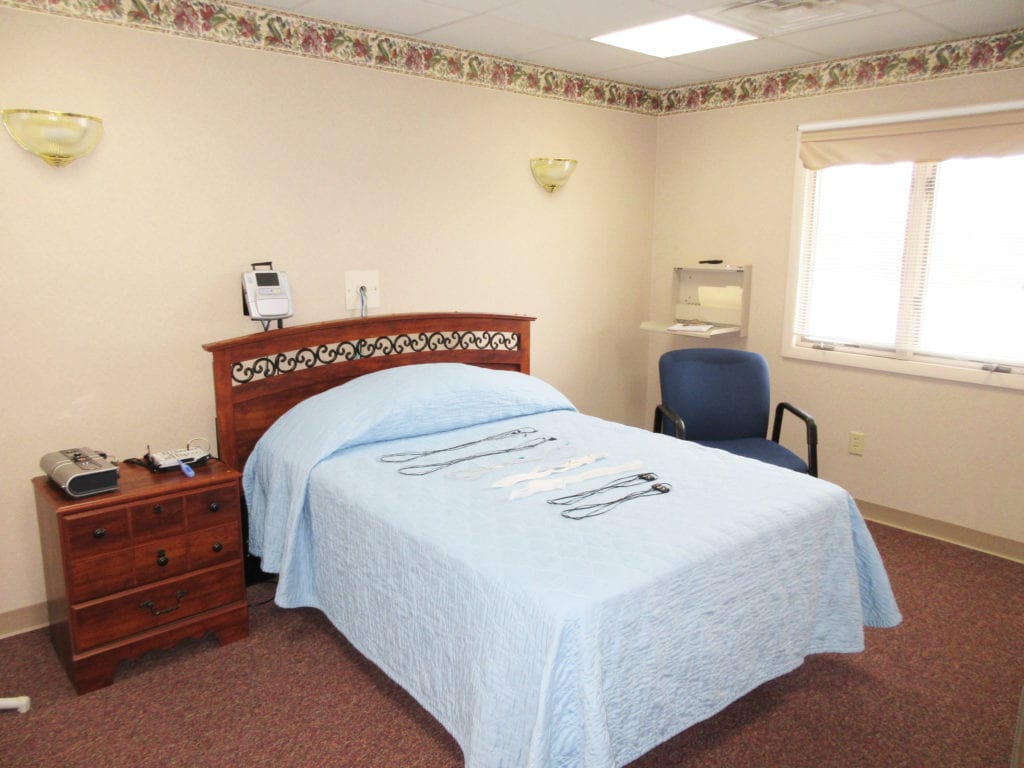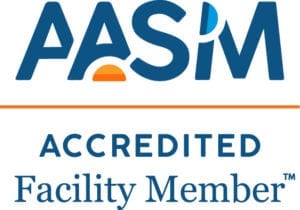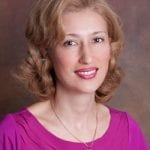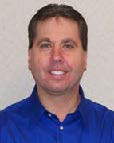Sleep Lab

Make your reservation now for an overnight Sleep Study or home study and start getting the rest you deserve.
Sleep Lab
Slocum-Dickson Annex
615 French Road
Accredited by the American Academy of Sleep Medicine

In order to be accredited, the Sleep Lab has met or exceeded all standards for professional health care as designated by the American Academy of Sleep Medicine. These standards include personnel, facility and equipment, policies and procedures, data acquisition, patient care, and quality assurance, as well as have stated and include plans to positively affect the quality of medical care in the community it serves.
Check-in to the new luxurious Slocum-Dickson Sleep Lab.
Spend a luxurious and highly therapeutic night at Slocum-Dickson’s new state-of-the-art Sleep Lab, located on the upper level of our French Road Annex. This spacious facility offers all the comforts of home, including:
- Four (4) hotel-like bedrooms with private baths
- TV in each bedroom
- Refrigerator and microwave on premises
- Full handicapped accessibility, including entrance and oversized rooms
- The latest diagnostic equipment
Sleep Lab Medical Director
 Tatyana Antonevich, MD is Board Certified in Internal Medicine, Pulmonary Medicine, and Sleep Medicine. She provides treatment for pulmonary conditions such as: Chronic Obstructive Pulmonary Disease (chronic bronchitis, emphysema), asthma, interstitial lung disease, diagnosis and screening for lung cancer, as well as sleep disorders including: Excessive Daytime Sleepiness, snoring and Obstructive Sleep Apnea. Dr. Antonevich completed her Sleep Medicine Fellowship at Seton Hall University School of Graduate Medical Education, Center for Sleep Disorders Treatment Research and Education, JFK Medical Center in Edison, NJ. She completed her Pulmonary Medicine Fellowship and Internal Medicine Residency program at Mount Sinai School of Medicine, Cabrini Medical Center in New York City. Dr. Antonevich earned her Medical Degree from Donetsk State Medical University in Ukraine.
Tatyana Antonevich, MD is Board Certified in Internal Medicine, Pulmonary Medicine, and Sleep Medicine. She provides treatment for pulmonary conditions such as: Chronic Obstructive Pulmonary Disease (chronic bronchitis, emphysema), asthma, interstitial lung disease, diagnosis and screening for lung cancer, as well as sleep disorders including: Excessive Daytime Sleepiness, snoring and Obstructive Sleep Apnea. Dr. Antonevich completed her Sleep Medicine Fellowship at Seton Hall University School of Graduate Medical Education, Center for Sleep Disorders Treatment Research and Education, JFK Medical Center in Edison, NJ. She completed her Pulmonary Medicine Fellowship and Internal Medicine Residency program at Mount Sinai School of Medicine, Cabrini Medical Center in New York City. Dr. Antonevich earned her Medical Degree from Donetsk State Medical University in Ukraine.
Sleep Lab Program Director
 Mark S. Jakubowicz, RPSGT, RST has over 20 year s of experience as a Respiratory Therapist and 12 years of experience in sales and marketing of home health care and durable medical equipment. Mark attended the Atlanta School of Sleep Medicine in San Diego, CA and later became a Board Registered Polysomnographic Technologist. He attended Utica College and is a graduate of the Respiratory Therapy Program at Mohawk Valley Community College.
Mark S. Jakubowicz, RPSGT, RST has over 20 year s of experience as a Respiratory Therapist and 12 years of experience in sales and marketing of home health care and durable medical equipment. Mark attended the Atlanta School of Sleep Medicine in San Diego, CA and later became a Board Registered Polysomnographic Technologist. He attended Utica College and is a graduate of the Respiratory Therapy Program at Mohawk Valley Community College.
Treatments & Services
Sleep Disorder Evaluation Process
Sleep is not simply a “lights out” process. Sleep is an active process that involves changes in brain wave activity, breathing, muscle tone, heart rate and rhythm; these changes directly or indirectly affect all of the systems of the body. While our sleep quality is most noticed during our waking day, it is only possible to study sleep while a person is sleeping. Now, due to advanced technology, it is possible to medically study the sleep of an individual.
At the Sleep Lab at Slocum-Dickson, the assessment begins with a formal consultation. Most sleep disorders can be diagnosed during this initial evaluation, and treatment can begin shortly afterward.
Sleep Study (Polysomnogram)
Electrodes and sensors are painlessly placed on the scalp and skin and connected to a computerized polygraph machine, located in another room, by one of our polysomnography technicians at approximately 9:30 p.m. The sleep recording includes brain waves (EEG), heart monitor, eye and chin movements, breathing effort, blood oxygen saturation, and leg muscle tone. While the electrodes may sound uncomfortable, in a few minutes you will be no more aware of them than you would be of a bandage. You will have a private bedroom with accompanying bathroom, remote control T.V., and reading lamp, which will allow you to feel more comfortable before going to sleep. You may not sleep as well as you do at home, but in nearly all cases, enough of your sleep will be recorded to render a diagnosis of your problem. You are usually awakened between 6 and 7 a.m. and you can then leave.
After your overnight stay at the Sleep Lab, we use a computer to review as many as 2,000 pages of information. We make a diagnosis, and a follow-up office appointment is scheduled to discuss the results and prescribe treatment. Some sleep disorders require medication, while others may require a simple change in daily habits or work schedule. Sometimes a home oxygen or pressure mask device is needed to ensure adequate breathing while you sleep. Some disorders may need to be treated in a few ways simultaneously. In all cases, your doctor will continue working with you to resolve the problem. You will also continue to receive your previous medical care from your personal primary care physician.
Sleep Disorders
Excessive Daytime Somnolence
Excessive Daytime Somnolence, also known as Excessive Daytime Sleepiness (EDS) has several common causes. The major cause for EDS are sleep restriction, sleep apnea and Narcolepsy.
Sleep Debt
Getting seven to eight hours of sleep a night is important. Some people do not get a full night’s sleep because they choose to stay awake for longer hours, others are prevented from getting a full nights sleep due to work related restrictions or personal obligations. The effect of lost sleep accumulates; it does not dissipate. Therefore, we become progressively impaired and daytime hypersomnolence is one of the symptoms of sleep debt.
Sleep Apnea
There are three types of Sleep Apnea: obstructive, central and mixed. Obstructive Sleep Apnea is the most common type. It occurs when the soft tissue in the rear of the throat collapses and closes during sleep causing a blockage of the airway. Individuals with Sleep Apnea may stop breathing as many as several hundred times a night. These breathing interruptions cause a person to awaken for a brief time so that the body can resume normal breathing. Each apneic event causes a disruption in the normal sleeping pattern and leads to poor sleep quality. The most important complications due to an apneic event are; the drop of the oxygen level in the blood, stress on the heart and high blood pressure which can lead to heart attack if the arteries of the heart are already narrow, stroke, damage to the brain and congestive heart failure.
Insomnia
Symptoms of insomnia include difficulty initiating and maintaining a good night’s sleep with multiple awakenings, struggling to fall back to sleep, not being able to sleep as long as needed and not feeling refreshed after a night’s sleep.
Narcolepsy
Patients who suffer from Narcolepsy have an inability to regulate sleep/wake cycles normally. This leads to a neurological disorder. The patient will experience Excessive Daytime Sleepiness and may even uncontrollably fall asleep for periods of time throughout the day. Other symptoms include cataplexy (sudden loss of voluntary muscle tone), vivid hallucinations (occurring while falling asleep or waking) and sleep paralysis (occurring while falling asleep or waking).
Sleep/wake schedule disorder
This disorder causes Excessive Daytime Sleepiness and difficulty falling asleep and waking at normal hours. Patients experience a lack of synchrony between their natural sleep/wake schedule and the sleep/wake schedule of the cultural environment. Some common causes of this disorder are jet lag, shift work related sleep disorder, delayed phase or advance phase syndrome.
Parasomnia
This condition can be described as a group of undesirable physical phenomena that occur during sleep. Included in this group are confusional arousals, sleepwalking, night terrors, Hypnagogic Hallucinations, sleep paralysis, nocturnal seizures, REM behavior disorder, teeth grinding, Rhythmic- Movement Disorder and Restless Leg Syndrome. A patient will usually have a moment of partial arousal before, during or after an event of Parasomnia.
Restless Leg Syndrome
An individual with this condition will feel a creepy crawly sensation with funny feeling mostly in their legs and occasionally in their arms while at rest. They will have the urge to move their legs for relief. Most people will experience the symptoms of Restless Leg Syndrome more strongly in the evening hours causing their sleep to be disrupted.
Periodic Limb Movement Disorder
This disorder often occurs with other sleep disorders particularly Restless Leg Syndrome. An individual with Periodic Limb Movement Disorder will usually experience repetitive, involuntary movement of the limbs during the night. In some cases an episode of Periodic Limb Movement will cause arousal, which can lead to poor quality of sleep.
Sleep Studies
Polysomnograph
This is a test of sleep cycle stages. It is used to evaluate possible sleep disorders. Electrodes and sensors are placed on the scalp and skin and connected to a computerized polygraph machine by a polysomnography technician. The sleep recording includes brain waves (EEG), heart monitor, eye and chin movements, breathing effort, blood oxygen saturation, and leg muscle tone.
A computer is used to review as many as 2,000 pages of information. A diagnosis is made, with a follow up office appointment to discuss the results and prescribe treatment. Some sleep disorders require medication, while others may require a simple change in daily habits or work schedule. Sometimes a home oxygen or pressure mask device is needed to ensure adequate breathing while you sleep.
CPAP Titration
This test is conducted for those individuals that have been diagnosed with Sleep Apnea and prescribed a CPAP machine (pressurized nasal mask or nasal pillow) to open breathing passages and allow air to flow more freely. During the titration study, the patient will be fitted with a nasal mask or nasal pillow that they will wear while they sleep. The technician will then monitor the patient as they sleep, periodically adjusting the air pressure of the CPAP unit until the correct pressure level is reached and the patient’s snoring and apneic events are eliminated.
Multiple Sleep Latency Test (MSLT)
An MSLT is used to test the degree of sleepiness or the sleep tendencies of a patient. This test helps to diagnose Excessive Daytime Sleepiness and Narcolepsy. The patient will be asked to take five naps over the course of the day, with each nap lasting approximately 15-20 minutes and allowing for two hours in between naps. Electrodes and sensors are placed on the patient to record eye movement, brain activity and muscle tone changes. With this information the physician can adjust medications for patients with Narcolepsy and quantify the degree of sleepiness in a patient.
Maintenance of Wakefulness Test (MWT)
This test measures a patients ability to stay awake during the day. It is used to evaluate excessive daytime sleepiness. The patient is tested every two hours during the day. For a period of about 40 minutes the patient is asked to rest comfortably in a reclined position in a darkened room. The patient is instructed to try to stay awake. Electrodes are used to measure how quickly the patient falls asleep and how long they remain asleep.
